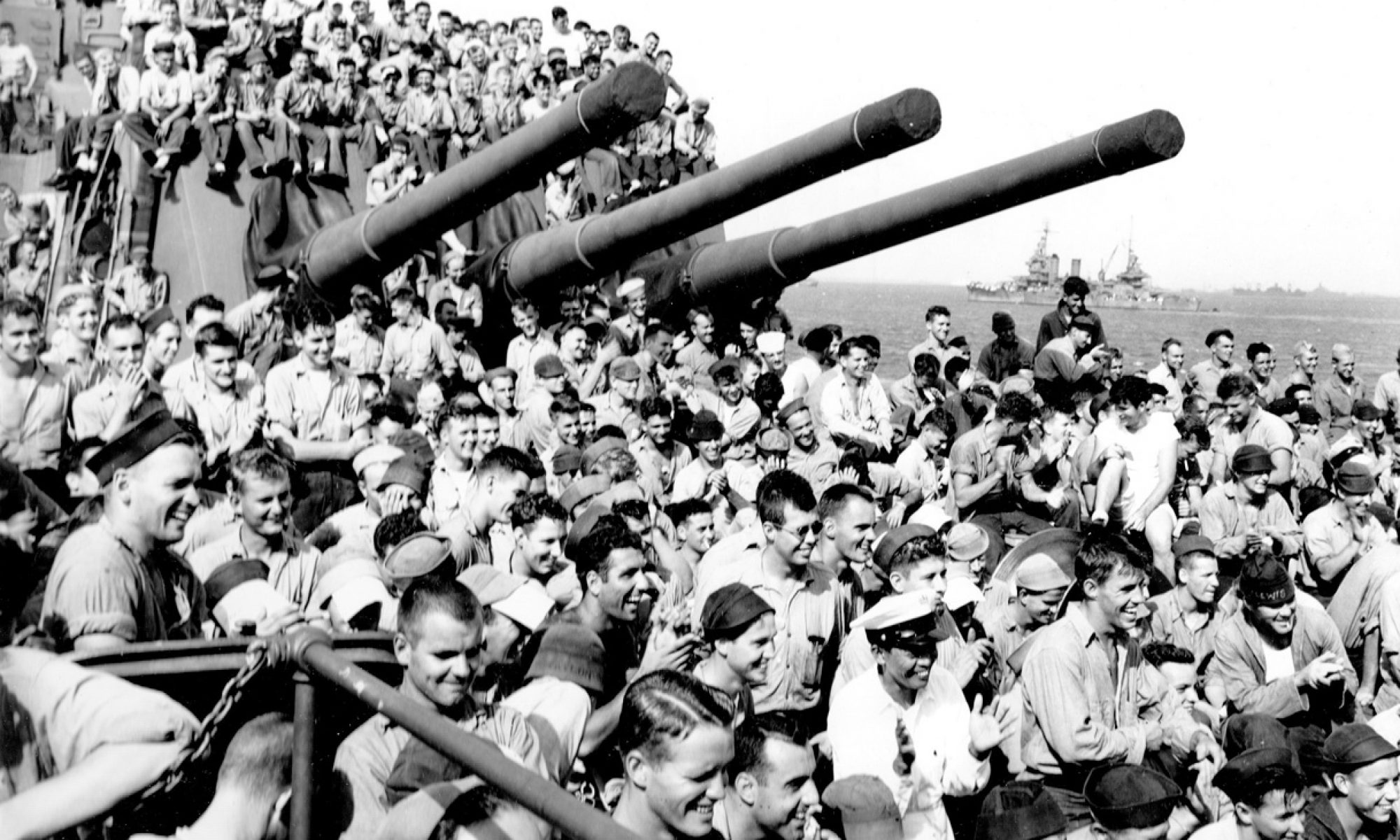On the morning of June 20, both Japanese and American commanders launched search planes trying to find each other’s whereabouts. Throughout the day, search missions proved fruitless. Japanese Admiral Ozawa, whose flagship carrier was sunk the day before, still planned to implement A-GO on June 21. He had been forced to abandon ship and hoist his flag on a cruiser, but by noontime he transferred to another carrier, better equipped for communication. He soon learned the truth and extent of the destruction.
American search planes finally spotted his fleet at 1615 hours (4:15). Admiral Mitscher ordered all carriers to unleash their fighters. The enemy was more than two hundred miles away.
Mitscher knew that it was too late in the day to launch this strike, that the pilots would barely have enough gas to reach the Japanese fleet and return to their carriers. But he also knew that he had a golden opportunity to devastate the enemy fleet — which now had less than 100 planes to protect it. Not an easy decision — but the right one – he knew he would lose planes and pilots in this attack.
The carrier pilots located the enemy fleet just before dark (1845 hrs (6:45)). They attacked and sank the carrier Hiyo, heavily damaged two other carriers, two cruisers, and several oilers and tankers.
By 2045 hours, the first returning planes were picked up by the picket ships’ radar. In the pitch darkness of a moonless Pacific night, Admiral Mitscher ordered all ships to turn their spotlights towards the nearest carrier and flip the switches. Returning planes sputtered out of gas and crashed into the sea. Others struggled to land on the nearest carrier in the dark – only a few of the pilots were trained in night landings – and there was chaos as some planes crashed on or near the carriers. About one hundred planes never made it back that night.
On June 21, the ships continue their pursuit of the Japanese fleet, all the while searching for downed airmen. By day’s end, about one hundred fifty pilots and crewmen are fished out of the water.
The Battle of the Philippine Sea and the A-GO plan was a complete disaster for the Japanese Navy. By the time they were able to escape beyond the reach of Task Force 58’s ships on June 21, they had lost one third of their carriers and all but 36 of their aircraft.
The two fleets would tangle again four months later once again in the Philippine Sea.
